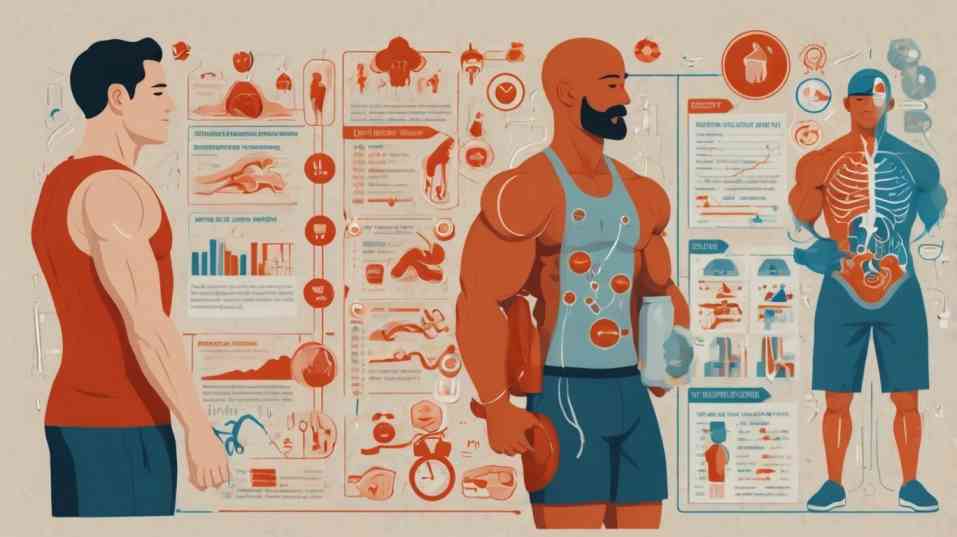How often should you work out? Learn the ideal workout frequency based on your fitness goals, lifestyle, and recovery needs in this expert-backed guide.

How Often Should You Work Out? A Comprehensive Guide to Mastering the Essentials
“How often should you work out?”—it’s a question as common as “What’s for dinner?” and just as important. Whether you’re aiming to build muscle, lose weight, improve heart health, or just feel better, understanding the right workout frequency is the key to results without burnout.
Too little and your body stagnates. Too much and you risk injury, fatigue, or worse—losing motivation. The answer isn’t one-size-fits-all. But the good news? This guide will help you find what works for you based on your goals, schedule, and fitness level—no generic advice here, just actionable, well-researched insight.
Why Workout Frequency Matters
Working out isn’t just about the hustle—it’s about recovery, progression, and sustainability. Exercise is a stimulus, but real change happens during rest. The sweet spot lies in balancing:
- Training intensity
- Duration
- Rest and recovery
- Personal goals
Knowing how often to work out helps avoid plateaus, overtraining syndrome, and injuries—all of which can derail even the most motivated person.
Factors That Influence How Often You Should Work Out
Before we dive into specifics, consider the key variables that shape your ideal workout schedule:
🧠 Your Fitness Goals
| Goal | Recommended Frequency |
|---|---|
| Weight Loss | 4–6 times/week (cardio + strength mix) |
| Muscle Gain | 3–5 times/week (resistance-focused) |
| General Health | 3–4 times/week (moderate intensity) |
| Endurance Training | 4–6 times/week (cardio-centric) |
| Stress Relief | Daily low-impact movement (yoga, walking) |
Each goal requires a different approach. For instance, muscle growth thrives on progressive overload and adequate rest, while fat loss is driven by consistency and calorie burn.
🧬 Your Experience Level
- Beginners: Start slow. 2–3 full-body sessions/week allows your body to adapt.
- Intermediate: 3–5 sessions/week with body splits or goal-specific routines.
- Advanced: 5–6 sessions/week, carefully programmed to allow recovery.
Avoid doing too much too soon—beginners who go all in risk burning out in weeks.
⏰ Your Schedule
Let’s be real—life gets busy. Work, family, and responsibilities can squeeze out gym time. Instead of forcing an unrealistic plan, build a flexible routine around your availability.
Even 15–20 minutes/day of focused training (like HIIT or resistance bands) can yield real results over time.
📝 Pro Tip: Consistency trumps intensity. A 30-minute walk daily beats a killer workout once a week.
Comparison: Different Workout Frequencies Explained
Let’s break down popular workout schedules and see how they stack up.
| Plan | Description | Best For |
|---|---|---|
| 3-Day Split | Full-body or upper/lower split | Beginners, tight schedules |
| 4-Day Split | Push/pull or body-part split | Intermediate, building strength |
| 5-Day Split | Muscle group-focused (e.g., chest day) | Bodybuilders, advanced lifters |
| 6–7 Days | Includes active recovery/yoga/walking | Serious athletes, cardio lovers |
Remember, more is not always better. Even elite athletes prioritize recovery days for muscle repair and hormone balance.
Science Speaks: What the Experts Say
🧪 The CDC Guidelines
The Centers for Disease Control and Prevention (CDC) recommends that adults strive to meet the following guidelines:
- 150 minutes of moderate-intensity aerobic activity per week, or
- 75 minutes of vigorous activity, plus
- 2 days of strength training
This aligns with the World Health Organization recommendations and supports both cardiovascular and muscular health.
💪 Muscle Building Research
A 2016 study published in Sports Medicine suggests training each muscle group twice per week results in superior hypertrophy (muscle growth) compared to once per week.
Translation? Working out more frequently—without overtraining—can lead to better gains.

Unique Insight: My Personal Experiment with Workout Frequency
As a fitness writer and personal trainer, I decided to test various workout frequencies over a year. Here’s what I found:
- 3 Days/Week (Full-body workouts): Great for maintaining strength and flexibility. Low stress. Best when I had a packed schedule.
- 5 Days/Week (Upper/lower split): Ideal for muscle gains. Felt energized and recovered well. Required good sleep and nutrition.
- 6–7 Days/Week: Only sustainable when I included yoga and walking as recovery. Too much lifting caused fatigue and joint discomfort.
The takeaway? Listen to your body. More isn’t always better. Progress lies in consistency, not perfection.
Practical Tips to Find Your Sweet Spot
🗓️ Build a Sustainable Weekly Plan
Here’s a sample schedule for different levels:
Beginner (3 Days/Week)
- Mon: Full-body strength
- Wed: Low-intensity cardio or yoga
- Fri: Full-body strength
Intermediate (4–5 Days/Week)
- Mon: Upper body
- Tue: Lower body
- Thu: Push muscles (chest, shoulders, triceps)
- Fri: Pull muscles (back, biceps)
- Sat: Cardio or active recovery
Advanced (6–7 Days/Week)
- Muscle-group splits + 1–2 active recovery days (walk, mobility, stretching)
🔁 Rotate Intensity Levels
To avoid overtraining:
- Mix high, medium, and low-intensity workouts
- Add deload weeks every 4–6 weeks to let your body reset
- Use tools like a fitness tracker to monitor effort and recovery
💤 Prioritize Rest
Recovery isn’t laziness—it’s part of training.
- Get 7–9 hours of sleep
- Stay hydrated
- Stretch or foam roll
- Use active recovery instead of total rest days to boost blood flow
Visual Snapshot: Weekly Workout Frequency by Goal
| Goal | Workout Days | Recovery Days | Notes |
|---|---|---|---|
| Fat Loss | 5–6 | 1–2 | Mix of cardio + strength |
| Muscle Building | 4–5 | 2–3 | Focus on progressive overload + sleep |
| Overall Health | 3–4 | 3–4 | Maintain balance, avoid burnout |
| Stress Reduction | Daily movement | 0–1 (optional) | Yoga, walking, swimming—gentle and relaxing |
Common Mistakes to Avoid
- Overtraining: Training without rest leads to fatigue, injury, and hormonal imbalances.
- Undereating: Especially common among those working out for weight loss. Fuel your body.
- Ignoring mobility: Include flexibility, mobility, and stability work in your week.
- Random routines: Stick to a program, not a bunch of unrelated YouTube workouts.
Conclusion: So, How Often Should You Work Out?
The answer depends on your goals, lifestyle, and recovery capacity. Here’s the golden rule:
🧠 The best workout frequency is the one you can stick to consistently.
Whether you train 3 or 6 days a week, listen to your body, progress gradually, and build a plan that fits your life—not the other way around.
Ready to Start? Let’s Build Your Plan!
- 💡 Beginner? Start with 3 days/week and build from there.
- 💪 Want muscle? Strive for 4 to 5 resistance-based training sessions.
- 🧘 Just want to feel good? Move daily—even a walk counts.
✅ What to Do Next:
- ✍️ Share your workout schedule in the comments! What’s working for you?
- 📥 Subscribe to our newsletter for free weekly fitness plans, tips, and expert insights.
- 📚 Explore related posts:
Make fitness fit into your life, not take over it. 💥

